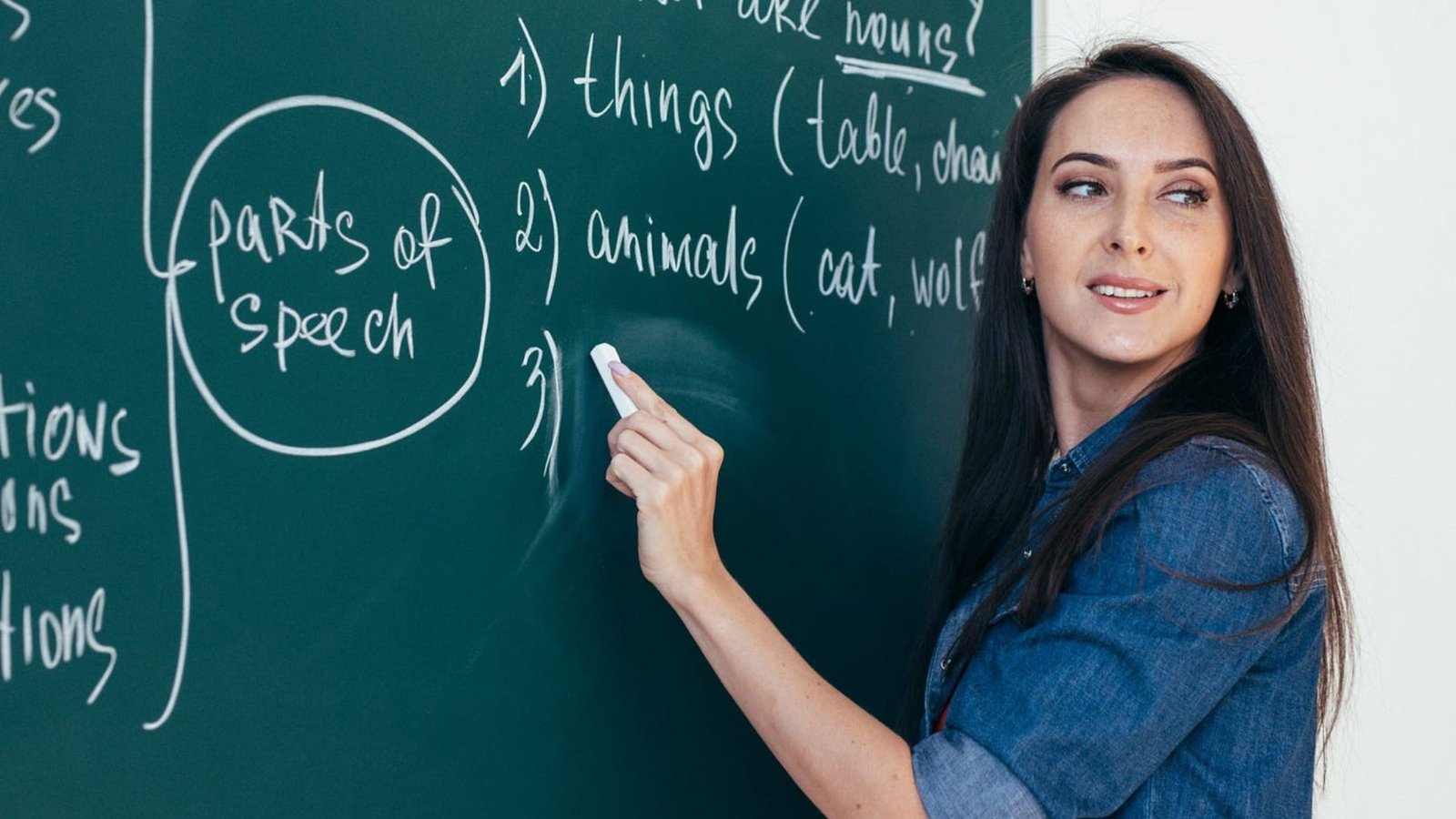Effective communication is the cornerstone of language proficiency, and mastering English conversation skills is crucial for language learners. In this article, we’ll explore practical and engaging techniques for teaching English conversation skills. These strategies aim to create a dynamic and inclusive learning environment while fostering fluency and confidence among students.

Teaching English Conversation Skills
Interactive Group Discussions
Encourage students to participate in group discussions on various topics. This approach not only enhances conversational skills but also promotes collaboration and idea exchange.
Role-Playing Activities
Incorporate role-playing scenarios to simulate real-life conversations. This hands-on approach allows students to practice language in context, making the learning experience more immersive.
Themed Conversational Prompts
Use themed prompts to structure conversations around specific topics. This helps students build vocabulary related to particular themes and increases their comfort level in discussing various subjects.
Storytelling Sessions
Engage students in storytelling activities where they can share personal experiences or create fictional narratives. This not only improves conversational skills but also encourages creativity.
Conversation Circles
Organize conversation circles and small groups where students can freely discuss a given topic. This provides a supportive setting for language practice and builds a sense of community among learners.
Daily Situational Dialogues
Introduce everyday situational dialogues, such as greetings, ordering at a restaurant, or asking for directions. This practical approach helps students navigate common scenarios they may encounter in English-speaking environments.
Vocabulary Games
Infuse playfulness into the learning process by incorporating vocabulary games. Word association, vocabulary bingo, or charades can make learning conversational English enjoyable.
Peer Feedback Sessions
Implement peer feedback sessions where students can review and provide constructive criticism on each other’s conversations. This promotes active listening and reflection.
Incorporate Multimedia Resources
Use audio and video resources to expose students to diverse accents, intonations, and conversation styles. This helps them adapt to different communication contexts.
Multimedia Resources
Integrate multimedia resources such as podcasts, videos, and news articles into lessons. Exposure to diverse accents, colloquial expressions, and real-world discourse contributes to a well-rounded understanding of conversational English.
Pronunciation Drills
Incorporate pronunciation drills to address common challenges. Focus on specific sounds, intonation, and stress patterns to improve clarity and help students communicate effectively in various situations.
Cultural Discussions
Explore cultural aspects of English-speaking regions to enrich language learning. Discussing cultural nuances enhances students’ understanding of context and ensures they communicate with cultural sensitivity.
Frequent Feedback Sessions
Conduct regular feedback sessions to provide constructive criticism and guidance. This helps students identify areas for improvement and reinforces positive language habits.
Group Projects
Assign collaborative group projects that require students to work together and present their findings. This not only enhances conversational skills but also promotes teamwork and cooperation.
Debate and Discussion Forums
Organize debate or discussion forums where students can express their opinions on various topics. This encourages critical thinking and articulation of thoughts in English.
Simulated Conversations
Create scenarios where students engage in simulated conversations, mimicking real-life situations such as job interviews, travel inquiries, or social gatherings. This provides practical experience in applying language skills.
Guest Speakers
Invite guest speakers, preferably native English speakers, to address the class. This exposure allows students to adapt to different accents and dialects, improving their comprehension and conversational adaptability.
Current Events Discussions
Incorporate discussions on current events to broaden students’ awareness of global issues. This not only expands their vocabulary but also prepares them for engaging in conversations on diverse topics.
Role-Playing Exercises
Conduct role-playing exercises where students take on different roles and engage in conversations. This helps build confidence, fluency, and the ability to navigate various social situations.
Journaling
Encourage students to maintain English journals where they can write about their daily experiences, thoughts, and reflections. This practice enhances writing and conversational skills simultaneously.
Language Immersion Days
Designate specific days for language immersion, where students communicate solely in English during class hours. This immersive approach accelerates language learning and encourages spontaneous conversations.
Error Correction Techniques
Provide constructive feedback on language errors, emphasizing the importance of accurate communication. Implement peer review sessions to enhance self-correction skills among students.
Customized Learning Plans
Tailor learning plans to address individual learning styles and goals. Personalized approaches take into account students’ unique needs, ensuring a more effective and enjoyable learning experience.
Language Exchange Programs
Facilitate language exchange programs where students can partner with native English speakers or fluent speakers of the language. This provides authentic conversational experiences and cultural insights.
Pronunciation Drills
Conduct regular pronunciation drills to refine students’ accents and intonation. Utilize audio materials, tongue twisters, and repetition exercises to enhance clarity in spoken English.
Storytelling Sessions
Encourage students to share personal stories or narratives in English. This not only improves conversational skills but also allows students to express themselves creatively.
Multimedia Resources
Integrate multimedia resources such as podcasts, videos, and documentaries into lessons. This exposes students to various accents, dialects, and colloquial expressions, making their language learning more dynamic.
In conclusion, the journey to mastering English conversation skills involves a combination of interactive activities, practical scenarios, and a supportive learning environment. By embracing these techniques, educators can create dynamic and engaging English classes that empower students to communicate confidently in real-world situations.




